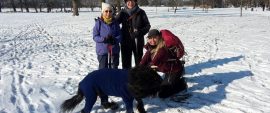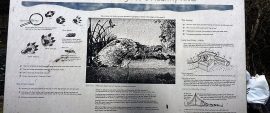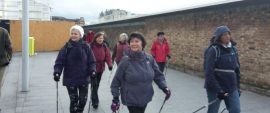Active and balanced
As a child, we learn to let our eyes, ears, muscles, brain, and nerves work together to keep us upright and steady on our feet. But with age, these balancing skills can become less dependable, especially if you don’t use them regularly.
“Every year in England, more than 223,000
people over 60 have a fracture as a result of a fall.”
According to Age UK, About one-third of people over 65 will fall in a year. And balance is not only important as you get older: falls represent over half of hospital admissions for accidental injury!
Active and balanced
Staying physically active can help you keep your balance as you age by keeping your nerves, muscles, and reflexes in good working order.
“Balance is like muscle strength: The more you use it, the less likely you are to lose it.”
Get active

If you’re inactive, you’re not challenging your balance systems or using your muscles. As a result, both balance and strength suffer. Worse, it can become a vicious circle. You feel a little unsteady, so you stop doing certain activities.
Good balance on the other hand helps prevent potentially disabling falls. It builds confidence and fosters independence.
The great news is ….it’s never too late to start adding daily balance drills into your routine or even include it in your Nordic Walking sessions.
Working on your balance is quite simple to do – and at Fit and Happy Outdoors we include exercises in most of our walks that involve balance work to help keep those motor skills in top condition.
Have your poles at hand? Here are some simple balance drills for you to try:
(If you don’t have any poles at hand, make sure you can hold on to something sturdy if you are likely to wobble!)
1. Simple leg swings

Stand on one leg and gently swing the opposite leg back and forward up to 10 times. Repeat with alternate leg.
2. Squatted leg swings


Stand on one leg, but this time gently squat down. (picture 1)
Straighten the standing leg while you swing the other leg forward up to waist level. (picture 2). Do this up to 10 times. Repeat with alternate leg.
Remember to only bend the standing leg slightly as pictured rather than trying to squat down as if sitting.
As you start to gain improved balance try both of the above with only one pole to support you.
3. Hip swings

 Start Position: Standing with poles far enough in front of feet to allow one leg to swing in front of the other.Stand on one leg and swing the other leg from side to side across the front of the supporting leg.
Start Position: Standing with poles far enough in front of feet to allow one leg to swing in front of the other.Stand on one leg and swing the other leg from side to side across the front of the supporting leg.
Keep the swing controlled. Increase the movement by allowing movement through the ankle on the supporting leg to turn onto the outside edge of the foot and then onto the inside edge. DON’T force the movement. Just allow it to happen.
4. One legged throw
Finally – if you want to work on balance at home try standing on one leg as you throw a ball either against a wall or to somebody who is prepared to catch it!! Simple, but VERY effective!!
More information
Want to know more? Have a look at Age UK’s Staying steady guide, which has information for everyone, whether you’re fit and active, have difficulty walking and getting around, or are worried about falling.
This post was adapted from a post earlier published on the Nordic Walking UK website.












